Dashboard Lights and What They Mean
Updated February 14, 2024 . AmFam Team
Our cars are better than ever at warning us when something isn’t quite right. So, how do you know if your car has an issue? Check the dashboard! The dashboard lights warn you about everything from a minor problem, like low washer fluid, to something major, like an overheated engine.
Not sure what those lights are telling you? We’re here to help. Learn more about the 10 most common dashboard warning lights and how they keep you safe.
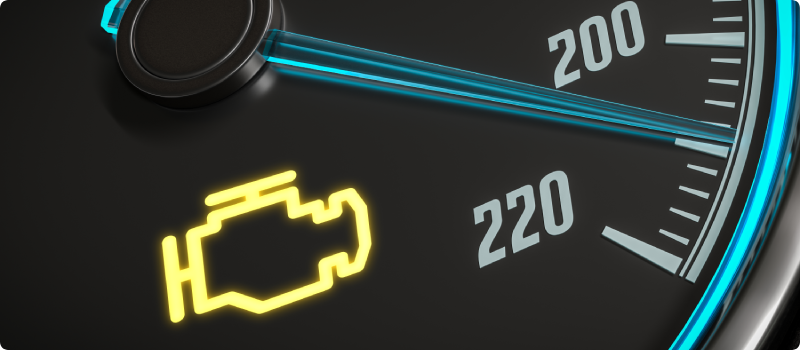
Check Engine Light
Resembling a tiny engine, the check engine light can be tricky because it comes on for a bunch of reasons. It could be as minor as a loose gas cap, which you can easily check and tighten. But if it’s not that simple, your best move is to ask a professional. Common reasons for this warning light are a faulty oxygen sensor, catalytic converter issues, mass airflow sensor, or worn-out spark plugs. Schedule an appointment as soon as possible to have the problem fixed so it doesn’t damage other engine components.
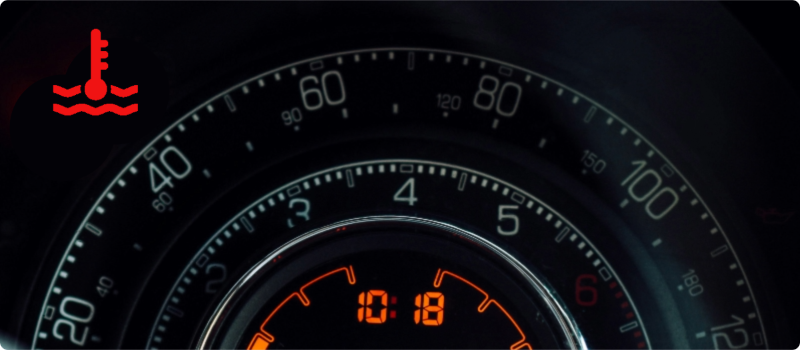
Coolant Temperature Warning
If the temperature of your engine coolant rises too high, you’ll see the coolant temperature warning light. It looks like a thermometer and requires immediate attention, since a hot engine will eventually overheat and break down. Adding coolant can temporarily fix the problem, but your system should be checked to ensure there isn’t a leak.
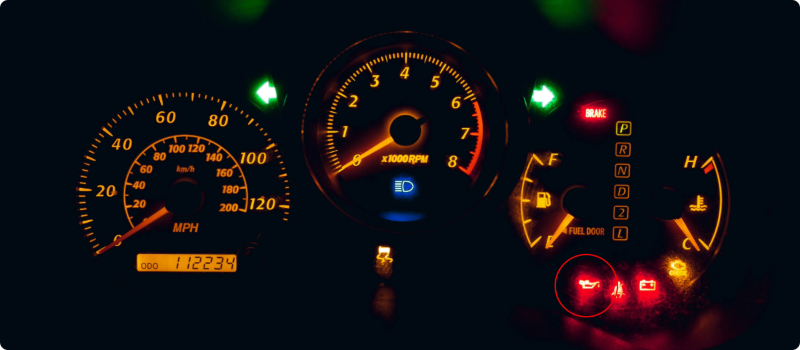
Oil Pressure Warning
This light looks like an oil can and comes on when your oil pressure is too low. It could mean you’re simply low on oil or it could be something more serious like a faulty oil pump. Pull over as soon as possible and have this checked. Driving a car with an oil pressure light on could end up seizing your engine, which is an expensive repair.
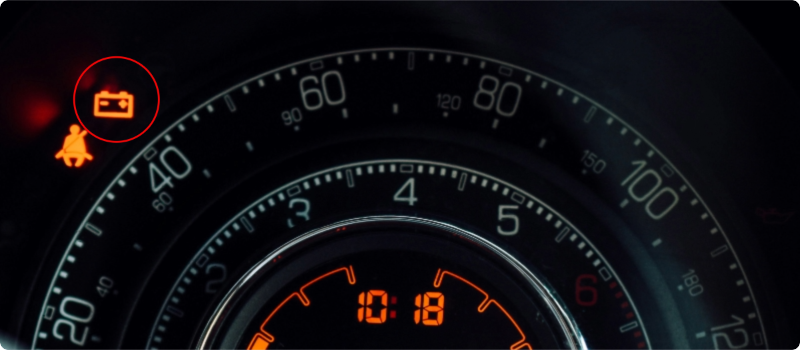
Battery Light
This one looks like a battery and indicates there’s a problem with your charging system. But it might not be the actual battery that’s the trouble. It could be a corroded cable or wire in the system or an issue with your alternator. Your car will run as long as the battery has some juice, but when that runs out, the car will stop and won’t restart. If you see this light, get to a mechanic as soon as possible to have your electrical system checked.
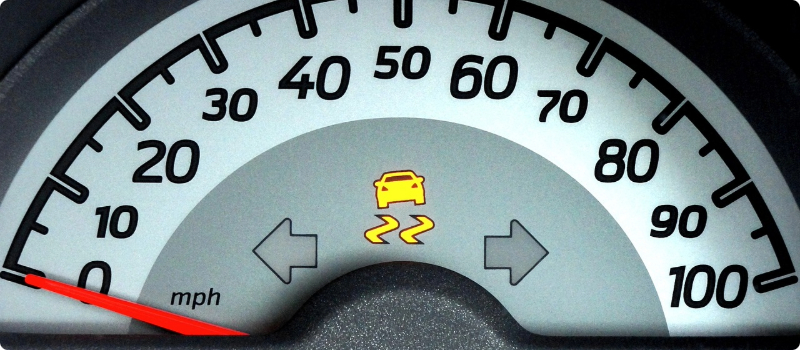
Traction Control Light
The traction control light, which looks like a car with skid marks behind it, will flicker on briefly when it’s doing its job. That’s okay, and not something to worry about beyond letting you know the roads are slick and you should drive with caution. If this light blinks on and stays on, then there’s a problem and the system needs to be checked.
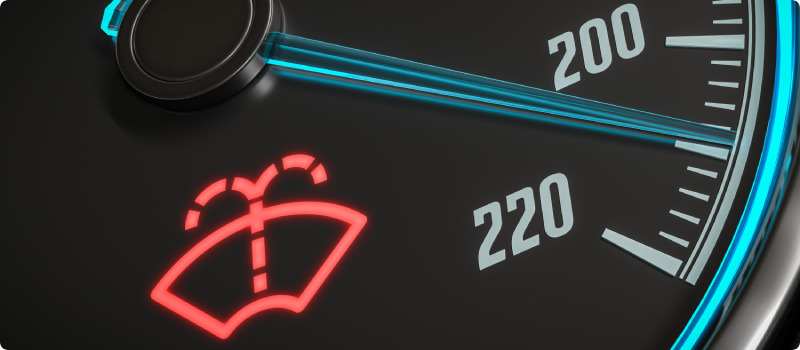
Washer Fluid Light
If your washer fluid is running low, your washer fluid light will be on. This light resembles a windshield with water being squirted onto its surface and is a reminder to fill up with washer fluid soon. While it won’t hurt your car if the fluid runs out completely, it’s still dangerous. Dirt, snow and ice can quickly accumulate on a windshield, making it hard to see. And you can’t drive if you can’t see.
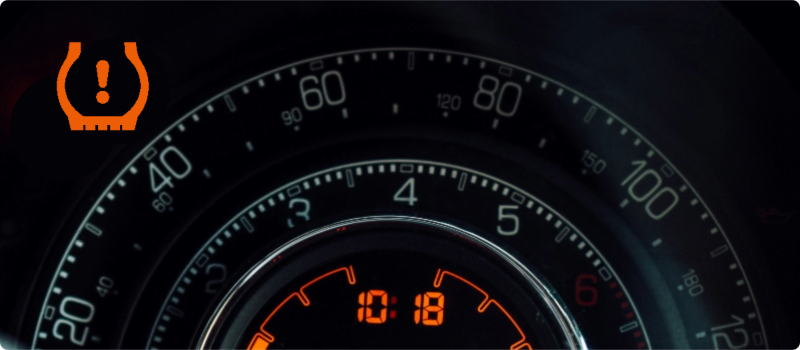
Tire Pressure Monitoring System
Low tire pressure in any one tire illuminates this dashboard light and requires immediate attention. It looks like a tire that’s a bit flat and has an exclamation point in the middle. Depending on your car, there may also be a display that tells you the pressure in each tire and which one is too low. Check the pressure in all tires and add air as needed. If the light repeatedly illuminates, then you might have a problem with your tire or the sensor and should have them checked by a professional.

Brake System Warning
You’ll see this dashboard warning light, which is usually a circle with an exclamation point in the middle, for something as simple as forgetting to release the parking brake. That’s an easy fix! It’ll also come on when the brake fluid is low or if there’s trouble with the anti-lock brakes, which also have their own additional warning light. Take your car in as soon as possible to have the problem properly diagnosed and repaired.
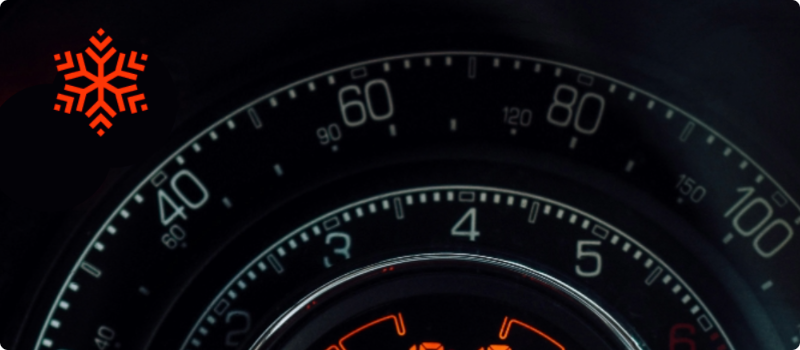
Frost Warning
The little light that looks like a snowflake is a warning that temperatures have dropped below freezing. This one turns on and stays on as long as it’s cold enough for ice to form on the road. It’s a simple reminder to use caution in cold conditions.
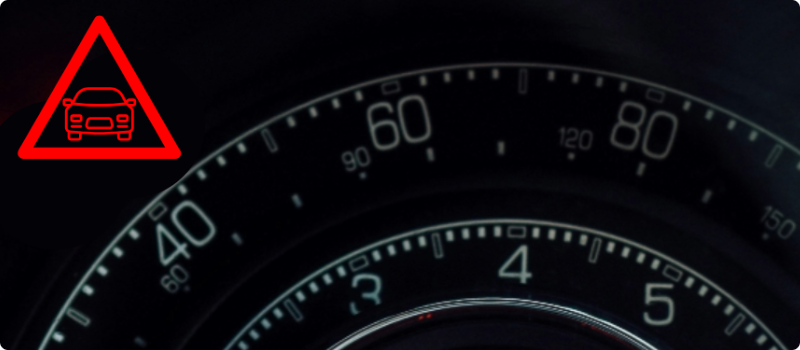
Distance Warning Light
This is one of the newer dashboard warning lights and often looks like two cars about to hit each other. However, it can also take the shape of a vehicle surrounded by a triangle. It uses radar sensors to determine if you’re closing the distance to an obstacle in the road too quickly. It could be any object, from another car to debris to a pedestrian. If you see this light, use caution and slow down if necessary to avoid a crash. Once you slow down, the light will turn off.
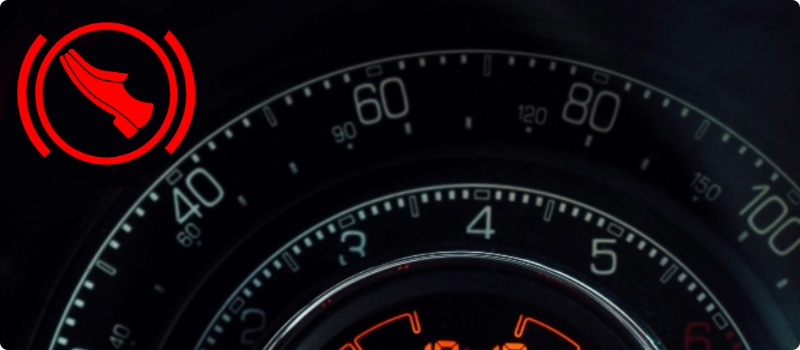
Automatic Shift Lock or Engine Start Indicator
This foot-shaped light is trying to tell you to step on the brake. Modern cars won’t start unless you brake before you turn on the ignition, so if you try to start the car without doing so, you’ll see this indicator. Press the brake and the engine will turn over. The same goes for shifting your car out of neutral. Simply apply the brake and the gear shift will move.
As cars continue to get more advanced, more warning lights are being added to our dashboards. All those indicators can get confusing, even a little overwhelming. If in doubt, pull over to a safe place, turn off the engine and check the owner’s manual to figure out what your warning light is trying to tell you. Because each one has something different to say.
Did you find this article useful? Because there’s a lot more where that came from! We have all the car maintenance advice and resource you need to protect your car from the unexpected. Find these car maintenance and repair resources here!
This article is for informational purposes only and based on information that is widely available. We do not make any guarantees or promise any results based on this information.

